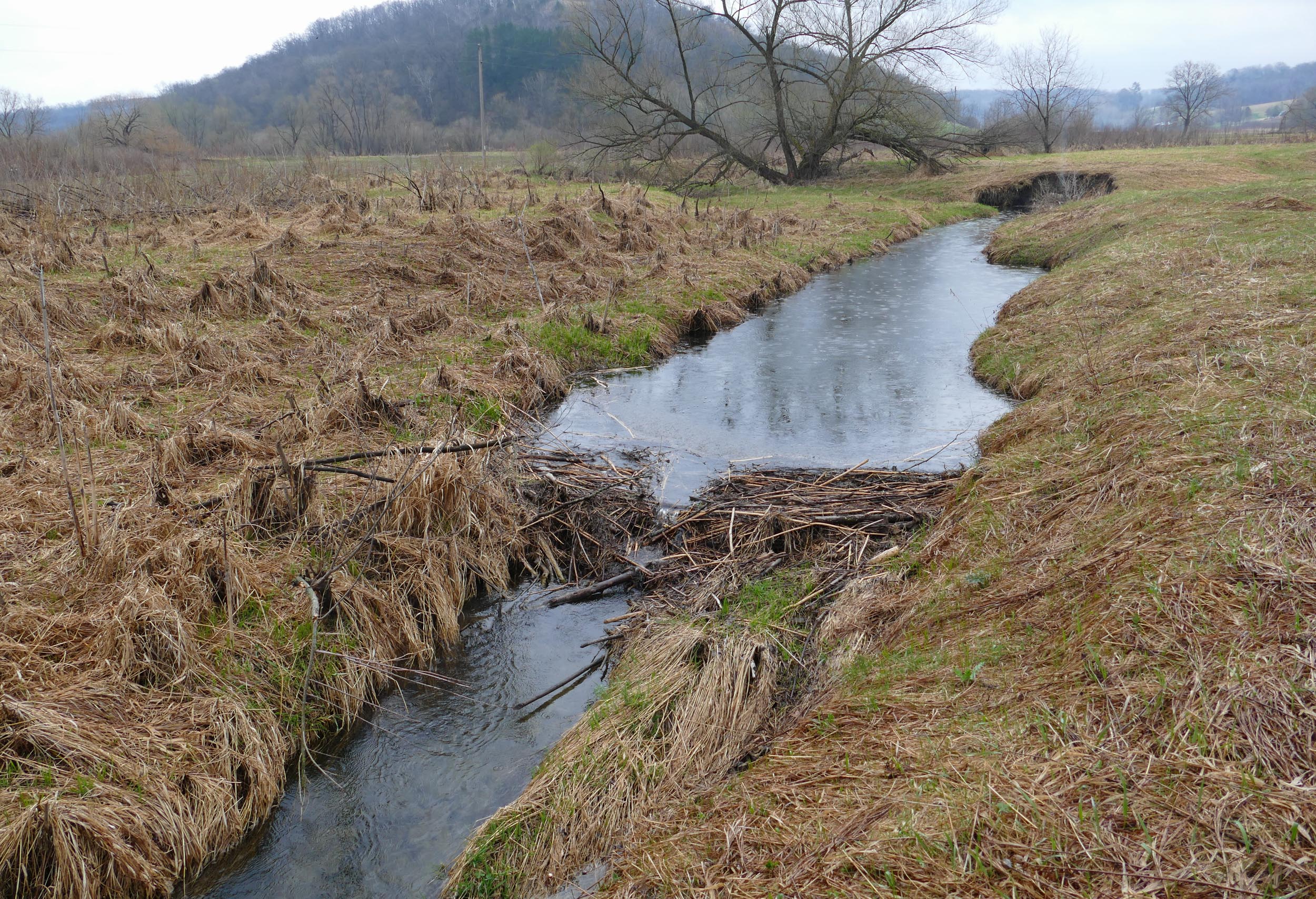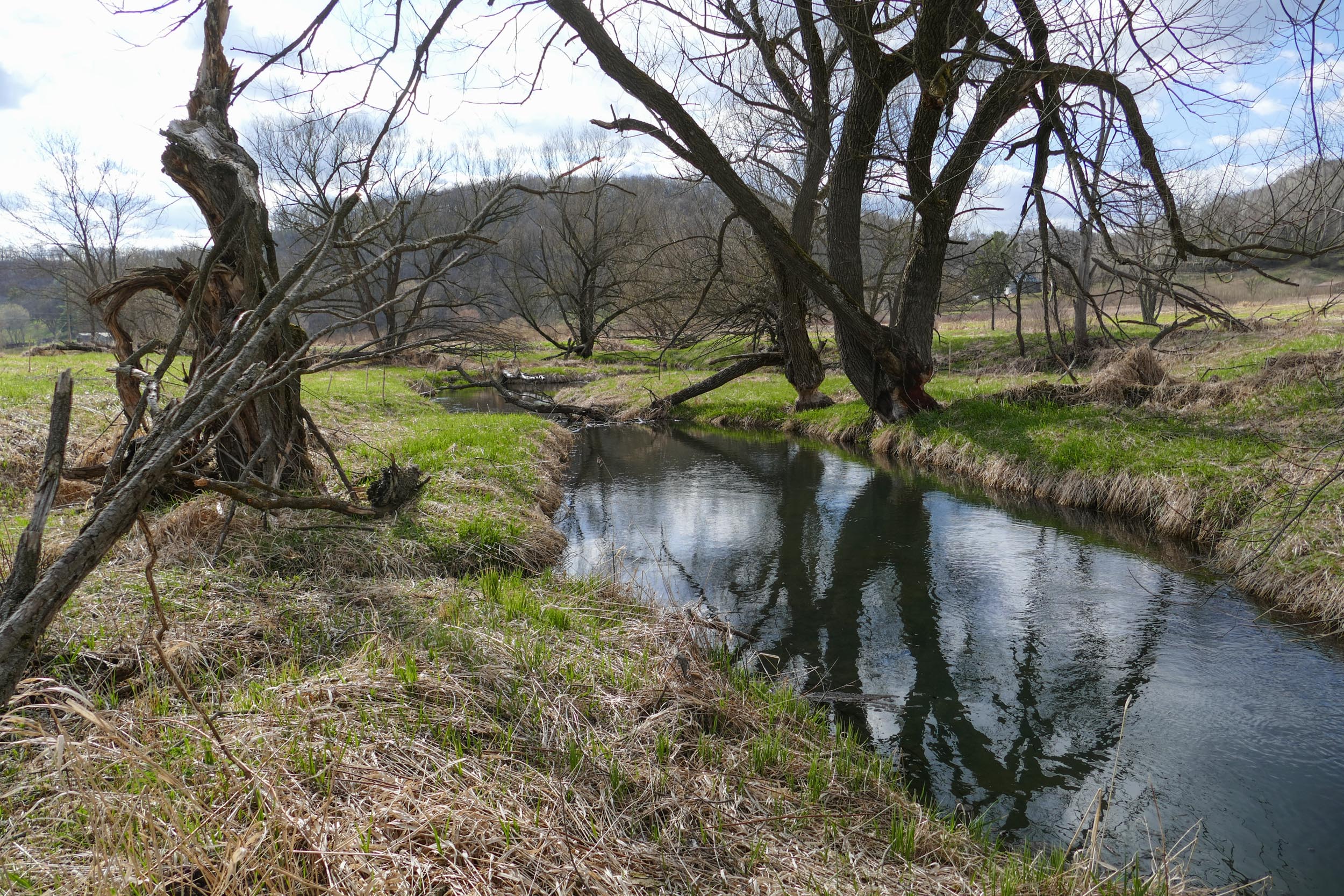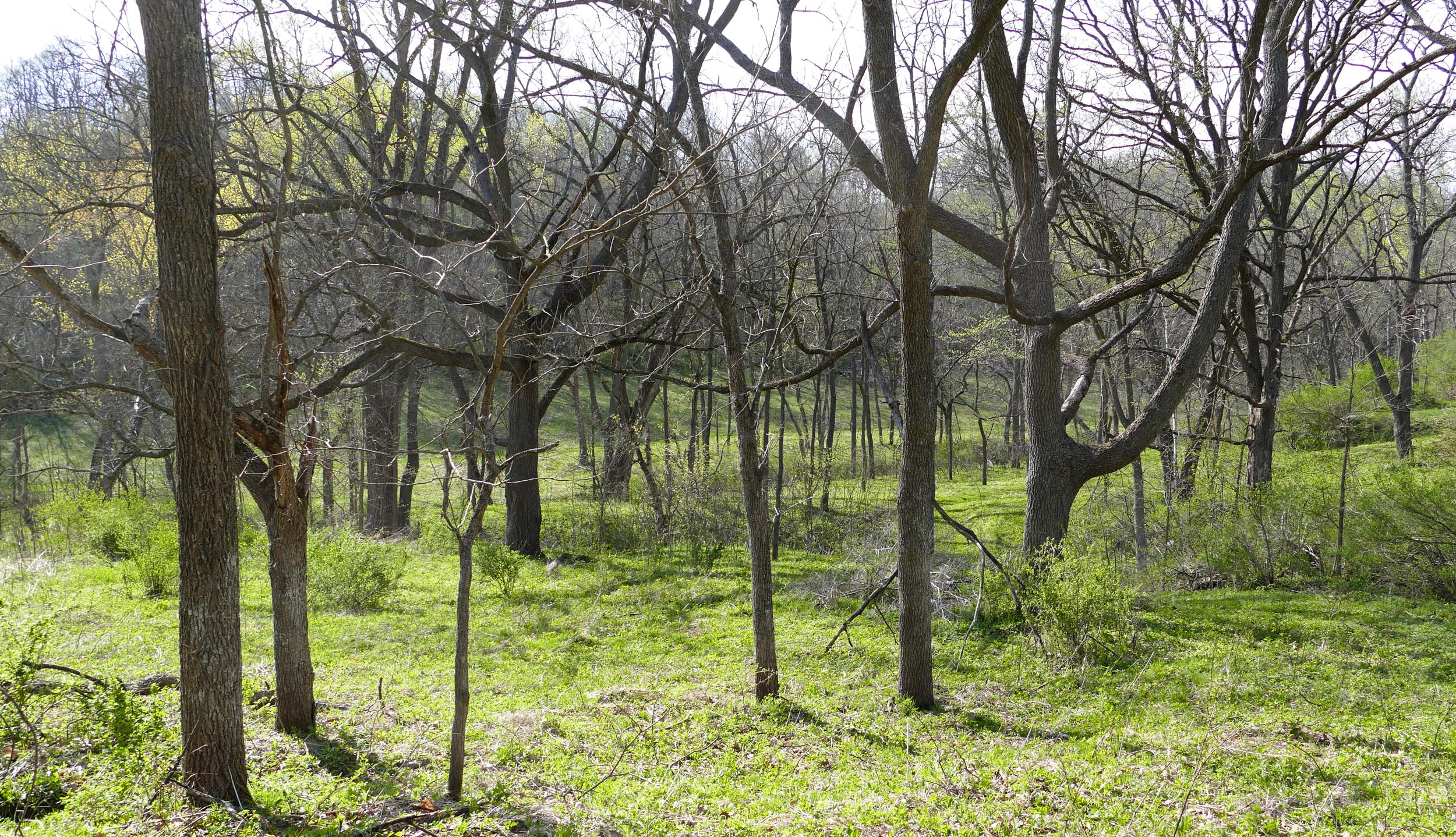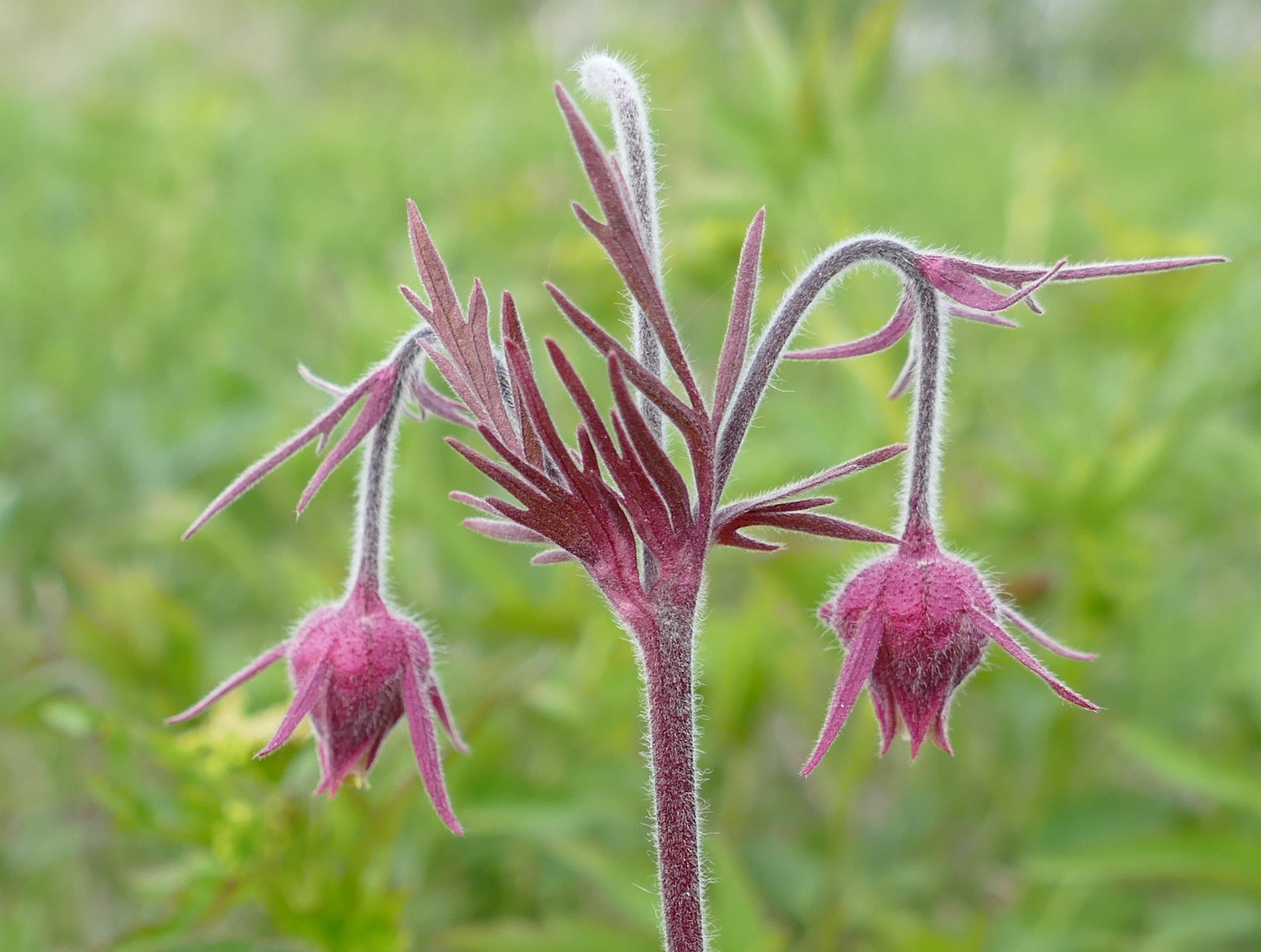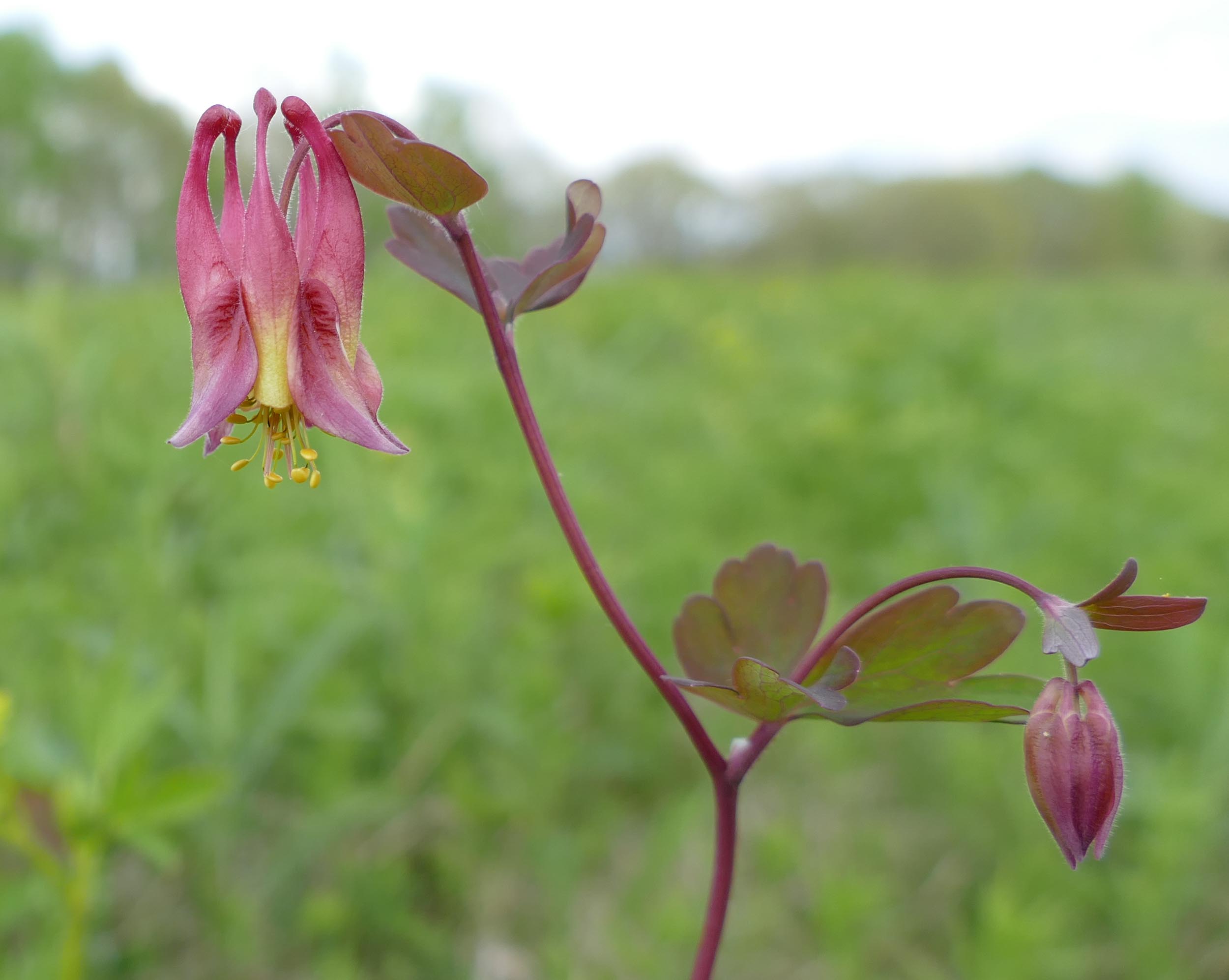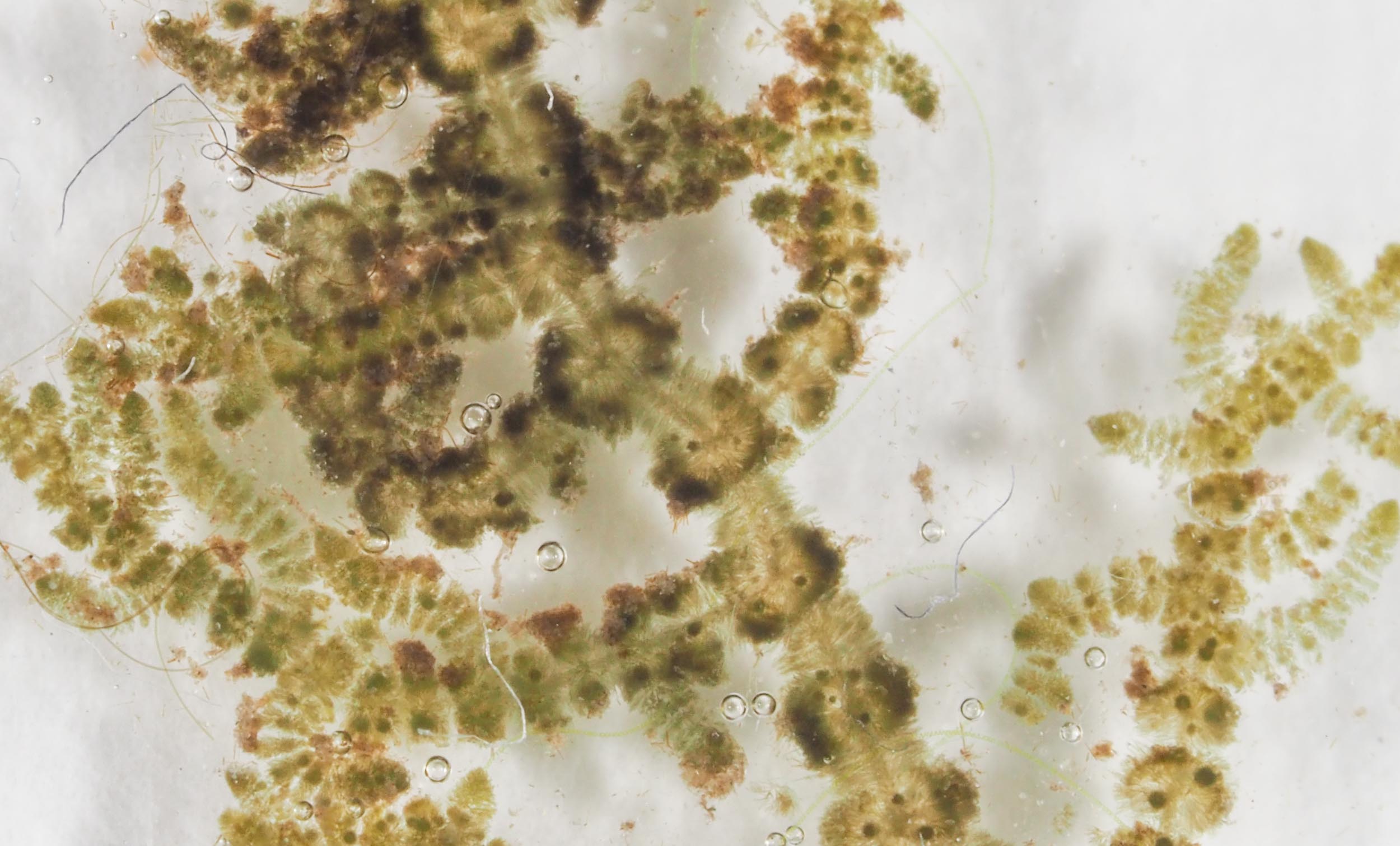We finally got rain after weeks of sunny dry weather – at least 2 inches so far. Yesterday, the heavy rain day, we had Grosbeaks, Orioles, Indigo Buntings and many others vying for places at the feeders. I counted 25 Rose-breasted Grosbeaks on and around the feeders at one time. It’s not raining as hard today, so there aren’t as many, but here are two in the nearby tree, waiting their turns.
A few weeks ago we walked down the creek to Willow Bend, to see how the beavers were doing. The land was just starting to turn green.
The beavers have built several small dams above the main dam.
This is the main dam – about 6 feet high
The quiet pool above the big dam
The beavers have gnawed their way partly through most of the big willows, but the trees are still standing and starting to put out spring leaves.
Gnawing marks on an old willow
More teeth marks
Even before the rain, the grass and trees were getting greener.
New leaves on Black Oak and Hill’s Oak
Some of the small trees are flowering…
Wild Plum
Fire Cherry
There are lots of flowers at this time of year, but most of them are close to the ground. They’re harder to see than the tall, showy summer flowers.
Violet Wood-sorrel
Hoary Puccoon
Prairie Smoke
Blue-eyed Grass – not actually a grass, it’s in the Iris Family.
Wild Columbine
Wild Lupine
Rue Anemone
Indian Paintbrush is one of the showier ones.
Wood Betony grows in woods edges and savannas, but also in open prairies. When it first comes up, in the very early spring, it has dark red leaves and stems.

By the time the flowers come out, the leaves and stems have turned green.
Wood Betony along the path up Indian Grass Point
Wood Betony is very attractive to bumblebees, so I’ve been working on photographing and identifying the ones I’ve been seeing. Photographing them is difficult because they never stop moving, and identifying them is difficult because the differences between them are so subtle. But here are two I identified successfully.
Two-spotted Bumblebee (Bombus bimaculatus)
Common Eastern Bumblebee (Bombus impatiens)
I planted several hundred Pasqueflower seeds last year and I’ve been wondering if any of the seedlings are coming up. They’re very small and difficult to see, but I did find this one. I’m hoping it will flower next spring.
Doe with her new fawn – the first we’ve seen this year. The fawn was alternately nursing and looking around. Mom was keeping an eye out for danger. We were worried we’d scare them away, because our path passed close by, but they stayed – watching us suspiciously – the whole time.
My first Black Swallowtail butterfly of the year. It had just emerged from its overwintering chrysalis, and got caught by my EV (the electric work vehicle) as I drove by. I found it sitting in a patch of sun by my feet. It was warm and protected from the wind, so I left it there, and by the time I came back to the EV – a few hours later – it had flown away.
First of the year Painted Lady. Painted Ladies are a migratory species. They spend the winter farther south, and fly north once the weather warms.
This small brown butterfly is a female Duskywing. There are two Duskywing species that look exactly alike – the only way to tell them apart is by the plants their caterpillars eat.
We watched this one lay an egg on a Columbine Leaf – confirming that it’s a Columbine Duskywing. (The other species lays eggs on Wild Indigo and related legumes.)
One of my favorite springtime moths – a Grapevine Epimenis
We’ve been seeing quite a few bobcats on the cameras…
A different view of the same bobcat.
A very fierce little Garter Snake
A woodchuck has dug a large hole next to our compost pile.
I did some exploring in the creek and found this Fountain Feather Moss growing under the water. I never knew there were mosses that would grow underwater.
The other interesting thing I found in the creek was a kind of Red Algae (Batrachospermum sp.). It’s a genus of freshwater algae that lives in clean, fast flowing streams, and pools in sphagnum bogs. Here it is pressed onto a glass slide.
And here’s the way it looks when it’s floating in water.
I found this lichen growing on a rock in the woods – one of the Dust Lichens. It’s fairly common around here – I’ve seen it growing on rocks along local roadsides.
The spring view from Hidden Oaks bench is getting greener every day.


